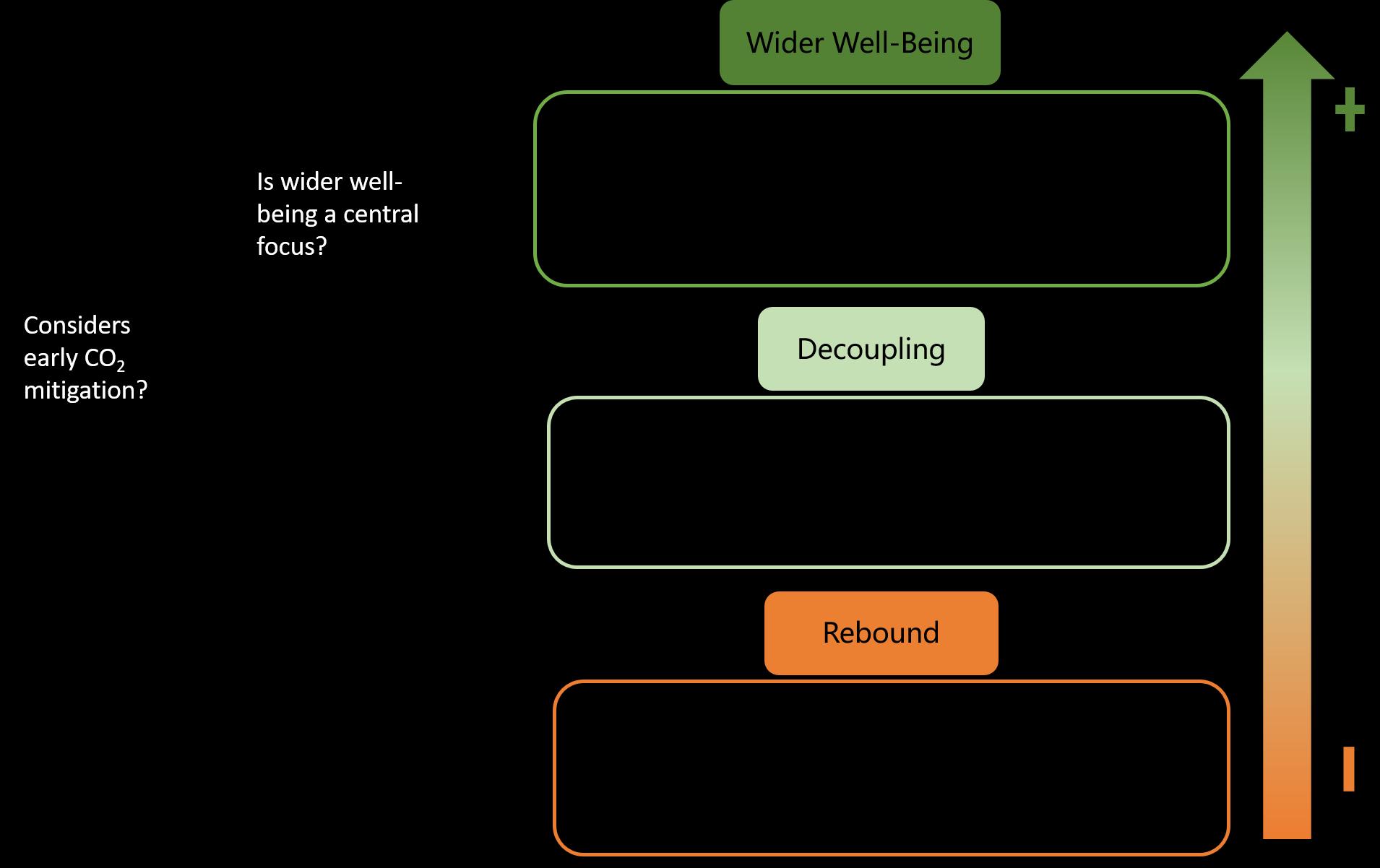COM/ENV/EPOC/IEA/SLT(2020)4/REV2
27
3 Overview of recovery measures in
surface transport according to the three pathways
The three stylised recovery pathways introduced in section 2, namely Rebound, Decoupling and Wider well-being, can inform analysis and assessment of specific sectoral recovery measures. This section maps recovery measures for the surface transport sector into the three stylised recovery pathways. This sector was selected as it is a major source of direct and indirect GHG emissions and relates intimately to a range of well-being outcomes, as highlighted below. Transport is essential to connect people and places and to move goods. It therefore adds huge social and economic value to societies. Surface transport is important to job creation. For example, car manufacturing accounts for around 14 million jobs globally (ILO, 2020[40]) and already in 2013 public transport accounted for 13 million (UITP, 2013[41]). However, energy related CO2 emissions from the transport sector have grown faster than those from any other sector in the last 50 years (OECD, 2019[8]). Indeed, direct CO2 emissions from the transport sector increased by 75% between 1990 and 2017 to an estimated 8 gigatonnes (Gt CO2), and represent 24% of global energy-related CO2 emissions (emissions (IEA, 2020[42])). In 2015, around half of transport emissions came from surface passenger transport, with urbanpassenger transport making up 32% of total sectoral emissions. Surface (road and rail) freight made 28% of sectoral emissions in the same year (ITF, 2019[43]). The transport sector has historically been considered a difficult sector to decarbonise (IPCC, 2014[44]) (Gota et al., 2019[45]). The International Transport Forum (ITF) has estimated that in a scenario where the negative economic impact from the COVID-19 crisis is long-lasting,14 even if countries maintain in place policies implemented and announced before the crisis, global emissions from the transport sector would only be 2% lower than those in 2015 by 2030, and would increase by 8% by 2050 (ITF, 2021[46]). A similar scenario modelled by the IEA, which includes existing policy frameworks and announced policy intentions (STEPS), estimates that emissions could be 5% higher by 2030 than those in 2019 (IEA, 2020). Beyond CO2 emissions, mobility systems have large impacts on well-being through air pollution, road crashes and noise, and may entrench social inequalities where segments of the population have limited or no access to economic (e.g. jobs), social (e.g., health, education) and environmental (e.g., green space areas) opportunities (OECD, 2019[8]).
Using the recovery to accelerate the decarbonisation of surface transport The policy landscape in the transport sector has changed significantly following the COVID-19 crisis, because of the social distancing measures put in place by governments to stem the pandemic and the economic fall-out caused by lock-down measures. In April 2020, daily global activity in passenger surface14
Assuming economic impacts linger in the form of a five-year GDP and trade projection “step back” (ITF, 2021[46])
Unclassified




